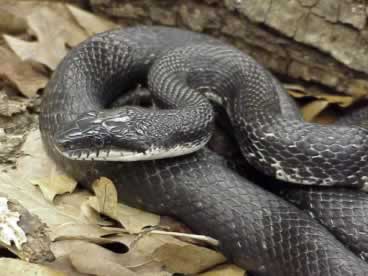Terms

Black Rat Snake
Conservation: efforts to preserve or restore natural resources such as streams, forests, or wildlife.
Ecology: the study of how organisms relate to one another and their environment.
Ecotone: Same as an edge environment; where two types of habitat blend together.
Ectothermic: When an animal's body temperature relies on the temperature in the environment.
Endothermic: When an animal regulates its own body temperature.
Edge environment: A transition zone, where one type of habitat fades into another. Edge environments are are good places to find reptiles and amphibians for several reasons. These animals are cold blooded, or ectothermic, which means their blood temperature depends on the temperature outside their bodies. At edge environments, or ecotones, ectothermic animals can easily move from the shade to the sun, easily regulating their own body temperature. Also, different types of food can be found in different types of habitat, and edge environments contain the food that herps like to eat.
Habitat: Where an animal lives.
Herpetology: the study of reptiles and amphibians
Microhabitat: Same thing as habitat, just more specific. For example, you could describe a spotted salamander's habitat as anywhere in the eastern United States, usually in damp places and in hardwood forests. The microhabitat for a salamander found on the Woodlawn campus would be on the bank of the ravine closest to the main building, under a log.
Ornithology: the study of birds